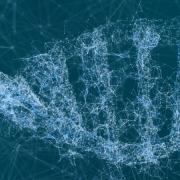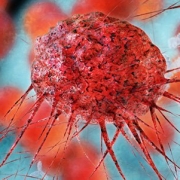The growing importance of genomics for rare disease
Genomic technologies are paving the way for new diagnoses, treatments and therapy for patients with rare and ultra-rare disease
Japan has announced a new project to use genome sequencing to help patients with rare diseases. The Initiative on Rare and Undiagnosed Diseases (IRUD) will refer patients without a medical diagnosis who may have a rare or even unique disease for expert genome sequencing and analysis. This is similar to the UK’s Deciphering Developmental Disorders (DDD) project, which sought to use genome sequencing technologies to identify genetic causes of childhood learning disabilities, and in many respects paved the way for the subsequent ground-breaking 100,000 Genomes Project, which is focused on rare diseases and cancer.
There are several thousand known rare diseases, and the majority of them are primarily genetic in origin. However, whole genome sequencing is rapidly expanding this group, as very rare and even unique harmful genetic variants (mutations) that could not previously be detected are found and linked with specific medical conditions. This emphasises the importance of sharing information about these diseases with health professionals internationally, since they may not have been seen in their country (let alone their personal clinical experience) before.
Japan faces a major challenge, since it has relatively few experts in clinical genome sequencing and analysis. Demand is growing in other countries, too; in those with insurance-based health systems such as the US, people who cannot access testing via their insurers are increasingly turning to crowd-funding and other ways to access genome sequencing in the quest for a diagnosis, whether independently or via initiatives such as the Undiagnosed Diseases Program or the Rare Genomics Institute.
Rare disease: increasingly common?
Besides increasing the capacity to diagnose and characterise rare and ultra-rare conditions, genome sequencing is adding to the pool of rare diseases in another fashion.
There is increasing recognition that conditions that were previously grouped together on the basis of their clinical presentation may in fact represent different sub-groups of disease with specific underlying genetic features.
Mainstream clinical specialities are also finding that people with rare genetic, heritable conditions form a modest but significant proportion of their patients. As clinical genome sequencing expands, the numbers of patients with a type of rare disease will increase.
Why diagnosis matters
According to Rare Disease UK, 75% of rare diseases affect children, and 30% of rare disease patients die before their fifth birthday, underlining the urgency of efforts to find a diagnosis. Using genome sequencing to identify an underlying cause of the condition where possible has several important potential benefits, besides speed. In the short term, it may help health professionals decide on the best way to treat the patient, as well as advising a child’s parents on the risk of future children being similarly affected.
Earlier this year, HEE’s Genomics Education Programme developed two videos to raise awareness of rare disease and the potential impact of genomics, which can be viewed here.
Ultimately, the hope is always that the knowledge discovered through genomics could lead to effective treatment for the condition; if none is available, creating a new drug, gene therapy or biological therapeutic may be possible – though the price tag for new treatments for rare conditions is typically high.
However, as rare becomes ‘the new common’ there may be increasing impetus to find solutions and move into a new era of increasingly personalised medicine. International efforts and collaboration in genomics will hopefully help make this a reality.
–









